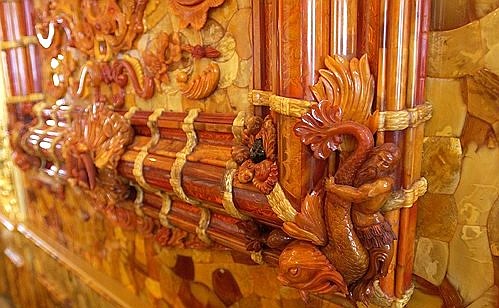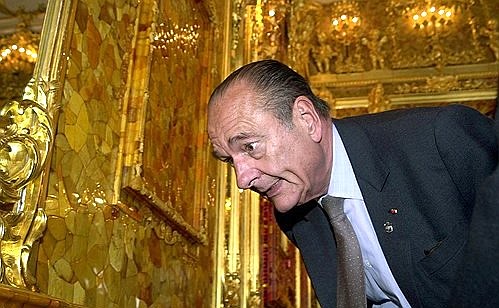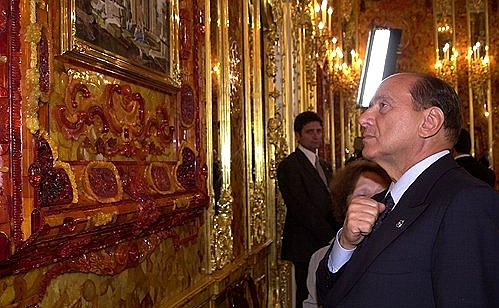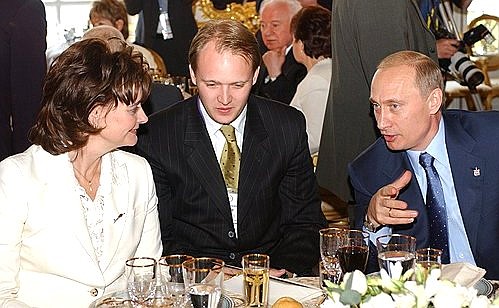The distinguished guests viewed the lavish interiors and admired the elegant bas-reliefs made from amber.
French President Jacques Chirac and his wife Bernadette were particularly enthusiastic about what they saw. Together they spent a long time studying the intricate amber patterns, details of the glittering mosaic murals and lingered in the room after the rest had left for the neighbouring room, where an official luncheon to mark the 300th anniversary of St Petersburg was given.
The early details of the unique Amber Study were created in the early 18th century by German and Danish artisans for the first Prussian King Friedrich I and were intended for a country palace outside Berlin. After the death of Friedrich’s wife work on the masterpiece was halted. Unfinished parts of the study were sent to Oranienburg where they remained until 1716 when Prussia’s second king, Friedrich Wilhelm I, presented them to Russian Emperor Peter the Great.
In 1755–1770 the German amber mosaics were augmented with new details and installed in the imperial summer residence at Tsarskoye Selo.
During the Second World War the interiors of the Amber Study were dismantled by the Nazis and taken to Koenigsberg, from where they disappeared without a trace in April 1945.
The search for the unique work of art has been underway for almost 60 years. In the 1990s two mosaic panels and a chest of drawers from the famous ensemble were found in Germany and returned to Russia. However, the fate of the rest of the amber collection is still unknown.
The exhibition opened today is the culmination of many years of work by Russian restoration experts, which began in 1979. The government allocated considerable funds to implement the ambitious cultural project. The material for the restoration of the precious panels was made available by the Kaliningrad Amber Factory and the North-Western Customs Authority. At the final stage of the work the German energy concern Ruhrgaz rendered financial support.






